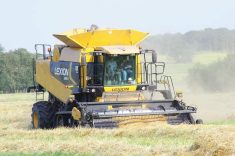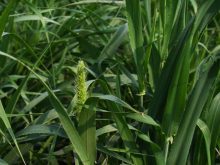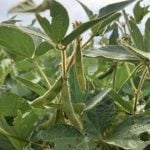(Resource News International) — A potentially devastating disease, clubroot, is causing concern for Alberta canola growers, according to a crop specialist with the province’s Ag-Info Centre.
Manitoba and Saskatchewan producers were also keeping a close eye on the development of the disease.
Clubroot, caused by Plasmodiophora brassicae, is a serious disease of canola, mustard and other crops in the cabbage family. Cole crops such as broccoli, brussels sprouts, cabbage, cauliflower, Chinese cabbage, radish, rutabaga and turnips are also susceptible to the disease.
Read Also

CBOT Weekly: Soybean, wheat futures come down
Soybean and wheat futures on the Chicago Board of Trade tumbled during the week ended Sept. 24, 2025, but corn futures stayed rangebound.
Clubroot was first detected in a canola field near Edmonton in 2003, according to information provided by the Alberta Clubroot Management Committee. The find was the first report of clubroot on canola in Canada.
“The clubroot disease problem has been showing up in the Edmonton area, specifically around Leduc,” said Harry Brook, a crop specialist with the Ag-Info Centre at Stettler, Alta.
“There have also been cases in Westlock, Barrhead and one case near Brooks.”
Tillage equipment represents the greatest risk of spreading the disease as soil is frequently carried on shovels from field to field, Brook said.
He noted resting spores are extremely long-lived, surviving in the soil for up to 20 years. The longevity of the resting spores is a key factor contributing to the seriousness of the disease, especially under tight canola rotations.
Research conducted by the Alberta Clubroot Management Committee indicated that infestations nearing 100 per cent cause about 50 per cent yield loss, while infestations of 10 to 20 per cent lead to five to 10 per cent yield loss. Yield and quality (oil content) of the canola seed is also reduced.
Brook said canola producers, including land users such as surveyors, seismic operators, oil operators and recreationists need to be vigilant and diligent in removing potentially contaminated soil from equipment prior to leaving fields in order to prevent the introduction of clubroot to clean fields as there are few economically viable options available to control infestations in canola.
“Producers also need to stop pushing canola in the rotation of crops on their land so aggressively,” Brook said. “There have been instances were producers have been cutting rotation to canola, wheat, canola wheat, canola wheat and in some cases canola, canola, canola.”
When producers follow this kind of crop rotation, he said, they promote the clubroot disease problem.
The Alberta Clubroot Management Committee, meanwhile, is recommending producers use long rotations, including growing canola once every four years or more. While this practice won’t prevent the introduction of the disease to clean fields, it will restrict this and other disease development within the field and probably avert a severe infestation, the committee said.
Practicing good sanitation measures on farm equipment is recommended to restrict movement of the disease. Direct seeding and other soil conservation practices is also recommended.
“If the crop rotation of canola is changed, it might be a bit hard for the canola industry to hit its western Canadian goal of area hitting 10 million acres,” Brook said.
But while clubroot is getting a lot of attention, he noted, it is not a national disaster yet.















